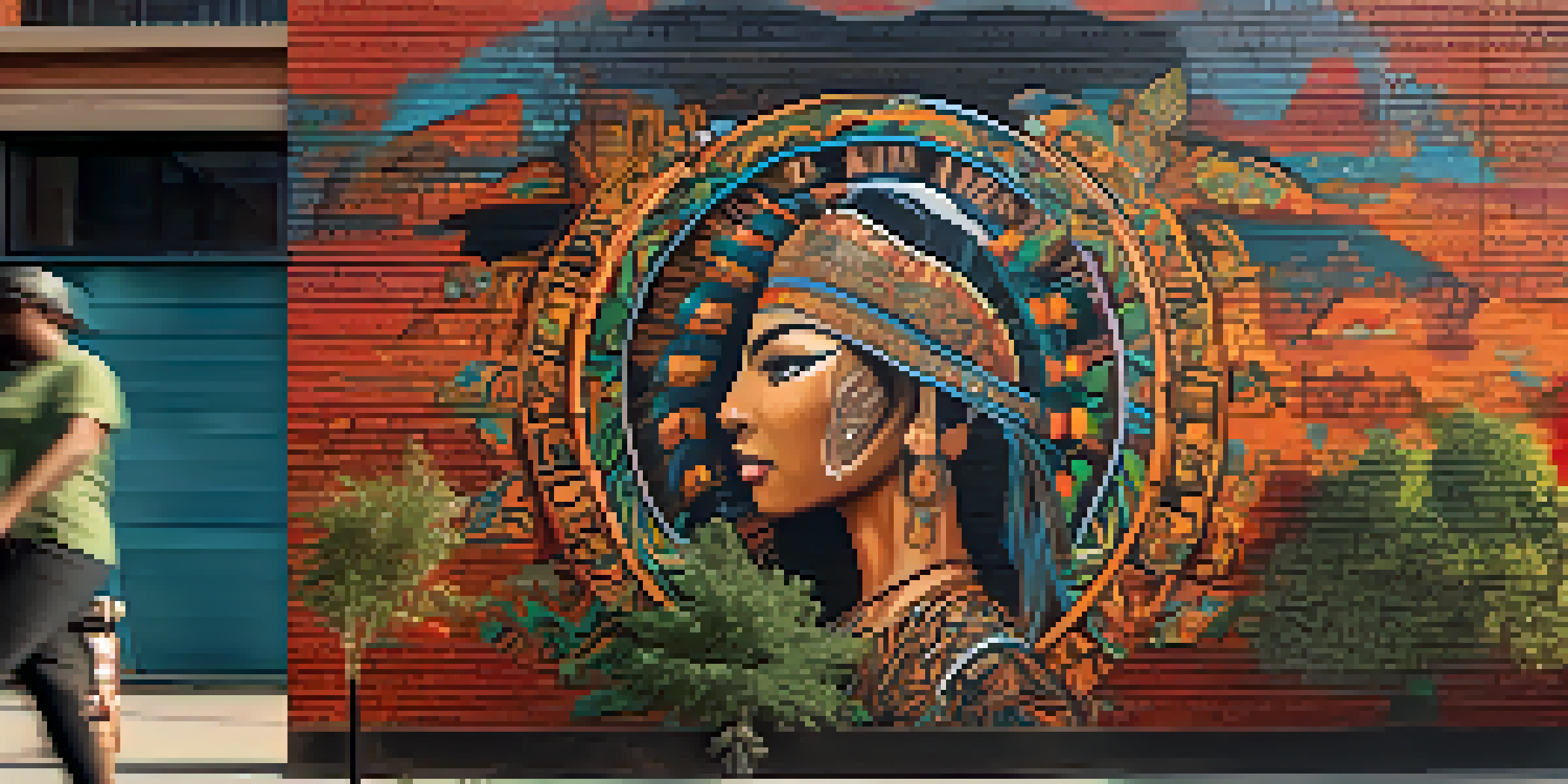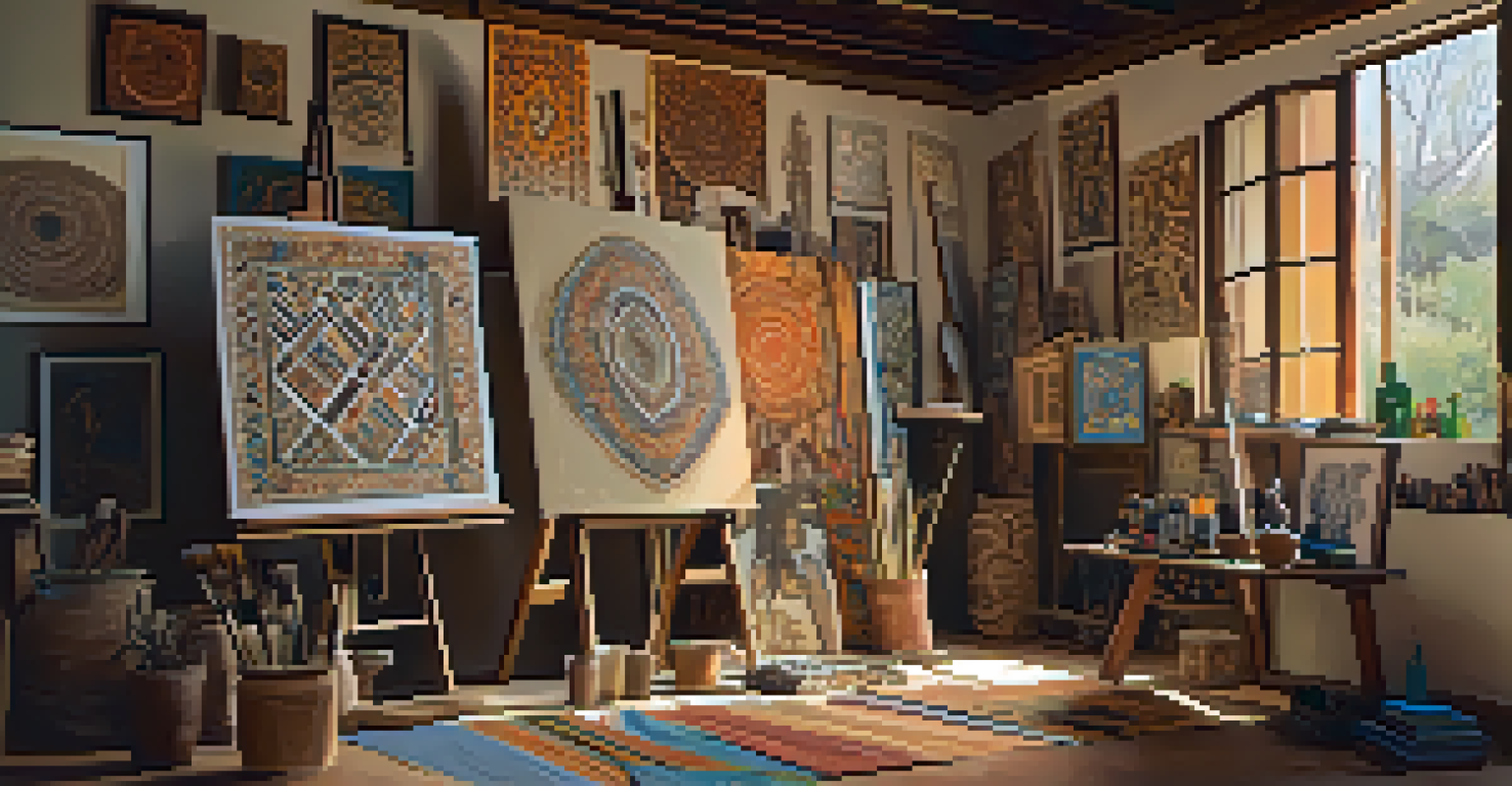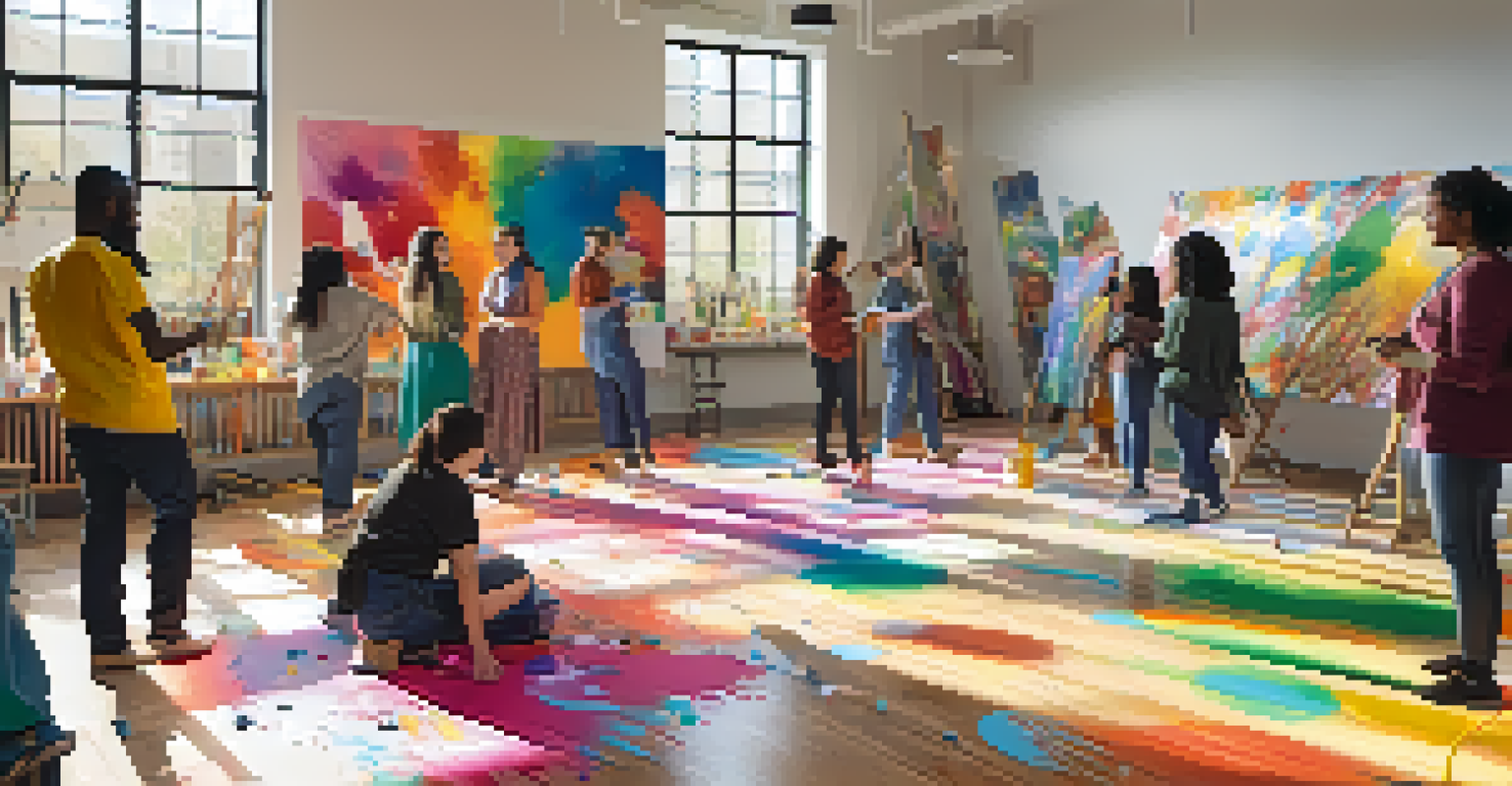Ethical Considerations of Cultural Appropriation in Art

Defining Cultural Appropriation in Artistic Contexts
Cultural appropriation in art refers to the act of borrowing elements from one culture by members of another, often without permission or understanding. This can include styles, symbols, or practices that hold significant meaning within the original culture. For example, when an artist uses traditional motifs from an Indigenous culture in their work but lacks knowledge of their origins, it raises ethical questions.
Art is a reflection of culture, but it must not become a weapon of cultural erasure.
It's important to differentiate cultural appropriation from cultural appreciation. While appreciation involves respectful understanding and acknowledgment of cultural origins, appropriation can lead to exploitation and commodification. This distinction is crucial in discussions about the ethical implications of art practices.
As art continues to evolve in a globalized world, artists must navigate these complex dynamics carefully. Acknowledging the origins of artistic influences and engaging in dialogue with the source communities can help prevent appropriation and foster mutual respect.
Historical Context of Cultural Appropriation in Art
Understanding the historical context of cultural appropriation is essential to grasp its implications in art. Historically, colonization has played a significant role in cultural appropriation, often leading to the erasure of native art forms and practices. For instance, the appropriation of African art by European artists during the colonial period highlights a troubling pattern of exploitation.

This historical backdrop sheds light on why certain artistic expressions can provoke strong reactions. When art is taken out of its cultural context, it can distort its meaning and significance, leading to a misunderstanding of the original culture. Artists and audiences alike must be aware of this history to create a more informed dialogue.
Cultural Appropriation vs. Appreciation
Understanding the distinction between cultural appropriation and cultural appreciation is essential for ethical artistic practices.
Furthermore, acknowledging historical injustices can pave the way for reparative actions. Artists today can strive to create spaces where voices from marginalized communities are amplified rather than silenced, fostering a richer artistic landscape.
The Impact of Power Dynamics in Cultural Appropriation
Power dynamics play a pivotal role in the discourse around cultural appropriation. When individuals from dominant cultures adopt elements from marginalized cultures, it often reflects a power imbalance. This can lead to the commodification of cultural symbols, stripping them of their original context and meaning.
Cultural appropriation is not about the act of borrowing; it’s about the context in which that borrowing occurs.
For example, when a fashion brand uses traditional garments without involving or compensating the originating culture, it raises questions of exploitation. The appropriation can be perceived as a form of cultural theft, where the dominant group benefits from the creativity and labor of the marginalized culture without giving back.
Recognizing these power dynamics is crucial for artists and consumers alike. By advocating for equitable practices and supporting artists from the cultures they draw inspiration from, we can work towards a more respectful and balanced artistic community.
Ethical Responsibilities of Artists in Cultural Borrowing
Artists have a unique responsibility when it comes to cultural borrowing. It’s essential for them to approach other cultures with respect and a willingness to learn. This means conducting thorough research, engaging with cultural experts, and understanding the significance of the elements they wish to incorporate into their work.
For instance, collaborating with artists from the culture being represented can lead to a more authentic and respectful exchange. This not only enriches the artwork but also provides a platform for voices that might otherwise be overlooked. By involving those whose culture is being drawn from, artists can create a more equitable environment.
Power Dynamics in Cultural Art
Power imbalances often lead to the exploitation of marginalized cultures when elements are borrowed without acknowledgment or compensation.
Moreover, artists should be prepared to listen and adapt to feedback regarding their work. Open dialogue about cultural representation can lead to greater understanding and prevent potential missteps in the creative process.
Audience Perception and the Role of Cultural Sensitivity
The audience's perception plays a significant role in how cultural appropriation is viewed in art. As consumers of art, individuals have the power to shape conversations around cultural representation. A more culturally sensitive audience can challenge artists to be more thoughtful in their creative processes.
For example, when viewers critically engage with art that they perceive as appropriative, it can lead to productive discussions about ethics and representation. This dialogue can encourage artists to reflect on their practices and consider the implications of their work.
Cultivating an awareness of cultural sensitivity within audiences can also foster a greater appreciation for diverse artistic expressions. By celebrating authenticity and encouraging respectful cultural exchanges, audiences can contribute to a more inclusive art world.
Navigating the Fine Line Between Inspiration and Appropriation
Navigating the fine line between inspiration and appropriation can be particularly challenging in the art world. Artists are often influenced by various cultures, leading to rich and diverse expressions. However, the key lies in how these influences are integrated into their work.
For instance, an artist inspired by a particular cultural style should ensure they are not simply replicating it without understanding its significance. Taking the time to learn about the culture and acknowledging it in their work can transform appropriation into appreciation.
Ethical Responsibilities of Artists
Artists must engage respectfully with other cultures, conducting research and collaborating with cultural representatives to avoid appropriation.
Ultimately, artists should strive for a balance between drawing inspiration and respecting the origins of their influences. This approach not only enhances the depth of their work but also fosters a more respectful artistic community.
Future Directions for Ethical Artistic Practices
Looking ahead, the conversation around ethical artistic practices is likely to evolve. As awareness of cultural appropriation grows, artists are increasingly expected to engage in more ethical and responsible practices. This shift could lead to a more inclusive art world that values collaboration and mutual respect.
One promising direction is the rise of initiatives that promote cultural exchange and understanding. Programs that connect artists from different backgrounds can foster meaningful dialogues and collaborations, allowing for a richer and more diverse artistic landscape.

Additionally, educational resources that emphasize the importance of cultural sensitivity and ethical considerations in art can empower emerging artists. By equipping the next generation with the tools to navigate these complex issues, we can hope for a future where cultural appropriation is approached with care and respect.